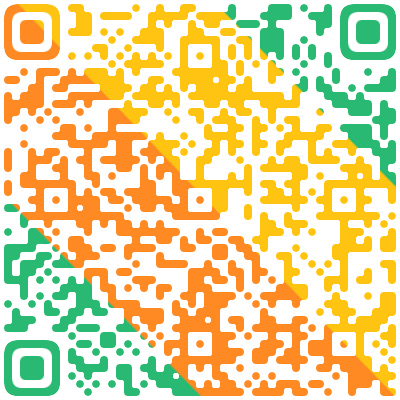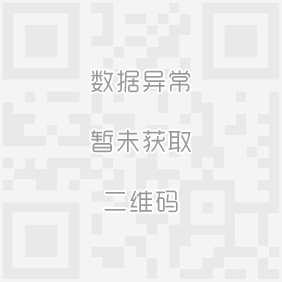lens
A. 呈双凸透镜状
B. 不含血管,有丰富的神经末梢
C. 看近物时变薄
D. 周缘借睫状小带连于睫状体
E. 发生浑浊时称白内障
查看答案
相关试题
换一换


lens
A.呈双凸透镜状 B.不含血管,有丰富的神经末梢 C.看近物时变薄 D.周缘借睫状小带连于睫状体 E.发生浑浊时称白内障
答案
lens位于
A.虹膜与睫状体之间 B.虹膜与睫状小带之间 C.虹膜与玻璃体之间 D.角膜与玻璃体之间 E.角膜与睫状体之间
答案
Myopic lens is()
A.Convex lens B.Concave lens C.Plain glass D.None of the above
答案
Soft lens evaluation includes()
A.Position of the center B.Movement C.Coverage D.All of the above
答案
What is the role of the condenser lens()
A.Control the aperture of light B.Increase the magnification C.Focus the light on the specimen D.Provide light
答案
I tried to take a photo of them for you, but my finger was covering the camera lens. What’s the meaning of “lens” in the sentence()
A.part of the eye located behind the pupil that focuses light B.the light-gathering device of a camera C.a channel through which something can be seen or understood D.a cover on the books
答案
This 80-200mm zoom lens bears canon’s L designation, denoting a top-of-the-line lens built to extremely high ().
A.tolerances B.pitch C.possession D.purses
答案
____ is usually the chief enemy of the camera lens.
A.Oxxasion B.Vain C.Moisture D.eck
答案
In the lens selection, which one is first recommended()
A.Glass B.Plastic lenses C.PC lenses D.None of the above
答案
LENS技术可打印小型复杂部件。
答案
热门试题
What is the “lens through which you see everything?”
Compared with the spectacles, the visual field of wearing a contact lens is()
disposable contact lens翻译成中文为()
Try to get to know the function of each part. The lens is ___
The clinical manifestations in the eye of the following diseases that does not include lens dislocation
When using a compound microscope, what is the magnification of the oil immersion lens()
Lens Effects Flare的光斑有几个部分组成()。
I bought a camera lens yesterday. Its _______ quality is excellent.
下列关于Light Effect中Lens Flare的描述中,正确的是()。
rm “weak eyesight” is misleading, _______ innear-sighted eyes the lens of the eye isactually too strong.
第一个称隐形眼镜为contact lens的人是()
The term “weak eyesight” is misleading, _______ in near-sighted eyes the lens(水晶体) of the eye is actually too strong
如佳能、MACRO LENS EF 100mm 1:2.8 其中()是指微距镜头
He was prepared to __________ any opportunity that came his way because he had the filmmaking skills, the storytelling lens and enough humility to wait for a good story to land.
前大灯集成LED日间行车灯及位置灯,提升整车配置,新颖独特的“C”字型造型,光源采用功率 颗 LED,结合反射碗加内LENS发光形式,点亮时更立体、更耀眼()
前大灯集成LED日间行车灯及位置灯,提升整车配置,新颖独特的“C”字型<br />造型,光源采用功率 颗 LED,结合反射碗加内LENS发光形式,点亮时更立体、更耀眼()
Passage 1 Traffic lights are crucial tools for regulating traffic flow. They are not, however, perfect. Drivers exchange the gridlock that would happen at unmanaged junctions for a pattern of stop-go movement that can still be frustrating, and which burns more fuel than a smooth passage would. Creating such a smooth passage means adjusting a vehicle′s speed so that it always arrives at the lights when they are green. That is theoretically possible, but practically hard. Roadside signs wired to traffic lights may help, but they have not been widely deployed. Now scientists have an idea that could make the process cheaper and more effective. Instead of a hardwired network of signs, they propose to use mobile-phone apps. For a driver to benefit, he must load a special software, dubbed SignalGuru, into his phone and then mount it on a special bracket attached to the inside of his car′s windscreen, with the camera lens pointing forwards. SignalGuru is designed to detect traffic lights and track their status as red,amber or green. It broadcasts this information to other phones in the area that are fitted with the same software, and--if there are enough of them--the phones thus each know the status of most of the lights around town. Using this information, SignalGuru is able to calculate the traffic-light schedule for the region and suggest the speed at which a driver should travel in order to avoid running into red lights. Tests in Cambridge, Massachusetts, where five drivers were asked to follow the same route for three hours, and in Singapore, where eight drivers were asked to follow one of two routes for 30 minutes, revealed that SignalGuru was capable of predicting traffic-light activity with an accuracy of 98.2% and 96.3% respectively, in the two cities. This was particularly impressive because in Cambridge the lights shifted, roughly half-way through the test, from their off-peak schedule to their afternoon-traffic schedule, while in Singapore lights are adaptive, using detectors embedded under the road to determine how much traffic is around and thus when a signal should change. Fuel consumption fell, too--by about 20%. SignalGuru thus reduces both frustration and fuel use, and makes commuting a slightly less horrible experience. What do we know about SignalGuru from the second paragraph?
Passage 1 Traffic lights are crucial tools for regulating traffic flow. They are not, however, perfect. Drivers exchange the gridlock that would happen at unmanaged junctions for a pattern of stop-go movement that can still be frustrating, and which burns more fuel than a smooth passage would. Creating such a smooth passage means adjusting a vehicle′s speed so that it always arrives at the lights when they are green. That is theoretically possible, but practically hard. Roadside signs wired to traffic lights may help, but they have not been widely deployed. Now scientists have an idea that could make the process cheaper and more effective. Instead of a hardwired network of signs, they propose to use mobile-phone apps. For a driver to benefit, he must load a special software, dubbed SignalGuru, into his phone and then mount it on a special bracket attached to the inside of his car′s windscreen, with the camera lens pointing forwards. SignalGuru is designed to detect traffic lights and track their status as red,amber or green. It broadcasts this information to other phones in the area that are fitted with the same software, and--if there are enough of them--the phones thus each know the status of most of the lights around town. Using this information, SignalGuru is able to calculate the traffic-light schedule for the region and suggest the speed at which a driver should travel in order to avoid running into red lights. Tests in Cambridge, Massachusetts, where five drivers were asked to follow the same route for three hours, and in Singapore, where eight drivers were asked to follow one of two routes for 30 minutes, revealed that SignalGuru was capable of predicting traffic-light activity with an accuracy of 98.2% and 96.3% respectively, in the two cities. This was particularly impressive because in Cambridge the lights shifted, roughly half-way through the test, from their off-peak schedule to their afternoon-traffic schedule, while in Singapore lights are adaptive, using detectors embedded under the road to determine how much traffic is around and thus when a signal should change. Fuel consumption fell, too--by about 20%. SignalGuru thus reduces both frustration and fuel use, and makes commuting a slightly less horrible experience. What does the passage mainly concern?
Passage 1 Traffic lights are crucial tools for regulating traffic flow. They are not, however, perfect. Drivers exchange the gridlock that would happen at unmanaged junctions for a pattern of stop-go movement that can still be frustrating, and which burns more fuel than a smooth passage would. Creating such a smooth passage means adjusting a vehicle′s speed so that it always arrives at the lights when they are green. That is theoretically possible, but practically hard. Roadside signs wired to traffic lights may help, but they have not been widely deployed. Now scientists have an idea that could make the process cheaper and more effective. Instead of a hardwired network of signs, they propose to use mobile-phone apps. For a driver to benefit, he must load a special software, dubbed SignalGuru, into his phone and then mount it on a special bracket attached to the inside of his car′s windscreen, with the camera lens pointing forwards. SignalGuru is designed to detect traffic lights and track their status as red,amber or green. It broadcasts this information to other phones in the area that are fitted with the same software, and--if there are enough of them--the phones thus each know the status of most of the lights around town. Using this information, SignalGuru is able to calculate the traffic-light schedule for the region and suggest the speed at which a driver should travel in order to avoid running into red lights. Tests in Cambridge, Massachusetts, where five drivers were asked to follow the same route for three hours, and in Singapore, where eight drivers were asked to follow one of two routes for 30 minutes, revealed that SignalGuru was capable of predicting traffic-light activity with an accuracy of 98.2% and 96.3% respectively, in the two cities. This was particularly impressive because in Cambridge the lights shifted, roughly half-way through the test, from their off-peak schedule to their afternoon-traffic schedule, while in Singapore lights are adaptive, using detectors embedded under the road to determine how much traffic is around and thus when a signal should change. Fuel consumption fell, too--by about 20%. SignalGuru thus reduces both frustration and fuel use, and makes commuting a slightly less horrible experience. Roadside signs have not been widely deployed probably because _________.
Passage 1 Traffic lights are crucial tools for regulating traffic flow. They are not, however, perfect. Drivers exchange the gridlock that would happen at unmanaged junctions for a pattern of stop-go movement that can still be frustrating, and which burns more fuel than a smooth passage would. Creating such a smooth passage means adjusting a vehicle′s speed so that it always arrives at the lights when they are green. That is theoretically possible, but practically hard. Roadside signs wired to traffic lights may help, but they have not been widely deployed. Now scientists have an idea that could make the process cheaper and more effective. Instead of a hardwired network of signs, they propose to use mobile-phone apps. For a driver to benefit, he must load a special software, dubbed SignalGuru, into his phone and then mount it on a special bracket attached to the inside of his car′s windscreen, with the camera lens pointing forwards. SignalGuru is designed to detect traffic lights and track their status as red,amber or green. It broadcasts this information to other phones in the area that are fitted with the same software, and--if there are enough of them--the phones thus each know the status of most of the lights around town. Using this information, SignalGuru is able to calculate the traffic-light schedule for the region and suggest the speed at which a driver should travel in order to avoid running into red lights. Tests in Cambridge, Massachusetts, where five drivers were asked to follow the same route for three hours, and in Singapore, where eight drivers were asked to follow one of two routes for 30 minutes, revealed that SignalGuru was capable of predicting traffic-light activity with an accuracy of 98.2% and 96.3% respectively, in the two cities. This was particularly impressive because in Cambridge the lights shifted, roughly half-way through the test, from their off-peak schedule to their afternoon-traffic schedule, while in Singapore lights are adaptive, using detectors embedded under the road to determine how much traffic is around and thus when a signal should change. Fuel consumption fell, too--by about 20%. SignalGuru thus reduces both frustration and fuel use, and makes commuting a slightly less horrible experience. What do drivers do if they want to pass unmanaged junctions smoothly?



 使用微信扫一扫登录
使用微信扫一扫登录